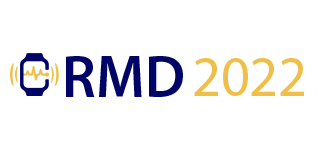Dear Colleagues,
It is our pleasure to invite you to join us for The Virtual 6th EAAR Annual Conference on New Medical Device Regulations (RMD2022).
At a time when digital communication is transforming every industry and every part of our daily life and work, we are committed to run an event that reaches as far as possible and fosters collaboration and engagement among its participants. The 6th edition of the Conference will be supported by a special digital platform, allowing everyone to connect, attend, while granting access to the resources provided during the conference even after its completion and you will have the opportunity to gain a better understanding of the implementation of the new European regulations on medical devices at this Sixth Conference.
In conjunction with EAAR (European Association of Authorized Representatives), our excellent panel of experienced professionals in this field will once again ensure a conference of noteworthy quality.
We look forward to welcoming you online to RMD2022 – The Virtual 6th EAAR Annual Conference on New Medical Device Regulations.

Mika Reinikainen
Conference Chair

GROUP REGISTRATION
Meet our Expert Speakers
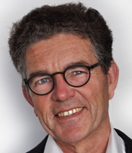
EAAR Member of the Board, Senior Global Regulatory Consultant, Emergo, The Netherlands

EAAR Member of the Board, Chairman of the Board, QAdvis, Sweden

Medtech Regulatory Affairs Editor, Medtech Insight, Informa Healthcare, UK
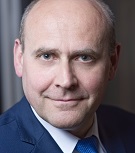
EAAR Vice-Chairman, President, Medical Device Safety Service, Germany
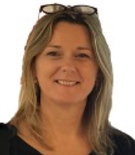
EAAR Member of the Board, Consulting Partner, Tecno-med Ingenieros, SL, Spain

Member of the Board, EAAR, CEO, QMed Consulting, Denmark

Member of the Board, EAAR, Co-owner & Principal Consultant, Qarad, Belgium

Partner, Axon Lawyers, The Netherlands
Conference Agenda
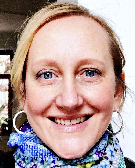
Head of Unit, Medical Devices and Health Technology Assessment, Health Technology and Cosmetics, DG SANTE, European Commission, Belgium
Anna-Eva Ampelas will present the new EU legislative framework for medical devices (MDR) & in-vitro diagnostic medical devices (IVDR). A state of play on the implementation of the New Regulations will be provided, including an overview of the main deliverables so far, challenges identified and next steps to achieve implementation priorities.

Medtech Regulatory Affairs Editor, Medtech Insight, Informa Healthcare, UK
Amanda Maxwell will consider: the impact on the sector of the altered timelines for the implementation of the Medical Device and IVD Regulations; the challenges at notified body level; and other critical MDR implementation issues. Specific topics covered will include progress and shortfalls related to the Eudamed medical device database, expert panels and standards, amongst others. Mention will also be given to political changes in the EU.

Partner, Axon Lawyers, The Netherlands
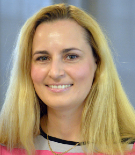
Head of Department for Medical Devices, The Swedish Medical Products Agency, Sweden
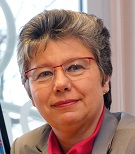
Team-NB Director, Belgium

Director General, Industrial Policies, Medtech Europe, Belgium
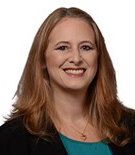
VP Regulatory Compliance, Qserve Group, USA
The new European regulations have presented the medical device industry with new challenges in order to ensure compliance to the MDR/IVDR and continue placing medical devices on the EU market. This session will identify some unique key challenges experienced by non-European medical device manufacturers in preparing for compliance to the MDR/IVDR, and the lessons learned and/or strategies being used by medical device manufacturers to address these challenges.

CEO and Owner of AKRA TEAM GmbH, Germany

Chairman of the Board, EAAR; Managing Director, Abnovo, UK
The changes in the scope and classification brought about by the new medical device regulation are evolutionary rather than revolutionary. They mainly reflect lessons learned and technological changes. A significant change is the addition of devices without a medical purpose within the scope of the regulation.
The borderline between medical devices and medicinal products is becoming sharper with new, more detailed definitions for pharmacological, immunological and metabolic means.
The impact of technological change can be seen in the new rules on software, nanotechnology and closed loop systems.
The new requirements add to the complexity of compliance and imply the need of guidance. Although much relevant guidance is published, some of it is still in preparation, but likely to be issued soon.

EAAR Member of the Board, Consulting Partner, Tecno-med Ingenieros, SL, Spain
Medical device manufacturers are obliged to demonstrate that their devices meet the General Safety and Performance Requirements (GSPRs) established in Annex I of the MDR. In the past, under the MDD, an Essential Requirements “checklist” was frequently used to show conformity. However, the MDR now requires specific information to be included to verify, validate and justify that GSPRs are met and a similar checklist document may no longer be adequate. In this presentation, we will explore these new requirements and provide insights into how to provide more robust justifications, with and without the benefit of presumption of conformity conferred by common specifications and/or technical standards harmonised with the MDR. In addition, we will look at some common issues related to GSPRs and lessons learned when submitting technical documentation for review. Early engagement with GSPRs to integrate them into design requirements and device specifications is key to ensure that adequate evidence is generated throughout the device development life-cycle to provide the basis for justification. Finally, meeting the GSPRs is an ongoing exercise to be ensured each time that devices are placed on the market. The Regulatory Compliance Strategy applied by the manufacturer therefore needs to include how applicable GSPRs are identified and met on an ongoing basis, in particular in the event of design changes, emerging risks or changes to the related standards.

Member of the Board, EAAR, CEO, QMed Consulting, Denmark
A brief overview of regulatory requirements for medical device Clinical Evaluation and Investigations pre- and post-CE mark according to MDR 2017/745 and IVDR 2017/746. Strategies on how to successfully migrate to MDR and IVDR, having in mind new challenges and recommendations from the MDCG guidelines, for example use of equivalence MDCG 2020-5 or sufficient clinical evidence for legacy devices MDCG 2020-6.

Member of the Board, EAAR; CEO, QAdvis, Sweden
An overview with background and status regarding the harmonisation process of standards in support of MDR 2017/745 and IVDR 2017/746.
The presentation includes an elaboration on the purpose and benefit of harmonised standards in the European context. Status and ongoing work program in MDCG Subgroup Standards will be discussed.
Status on Common Specifications and planned publications.

EAAR Vice-Chairman, President, Medical Device Safety Service, Germany
Post Market Surveillance – A new concept OR a great misunderstanding / The importance of Post Market Surveillance
Vigilance – Are there new reporting requirements?
Market Surveillance – How is the new Market Surveillance being applied?

Member of the Board, EAAR, Co-owner & Principal Consultant, Qarad, Belgium

EAAR Member of the Board, Senior Global Regulatory Consultant, Emergo, The Netherlands

EAAR Member of the Board, Chief Compliance Officer, Obelis, Belgium
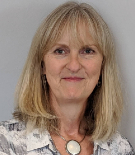
Vice-President, Team-PRRC, UK

EAAR Member of the Board, Chairman of the Board, QAdvis, Sweden
A brief overview of regulatory requirements for medical device software according to MDR 2017/745, and IVDR 2017/746. Challenges qualifying and classifying medical device software, for example rule 11 in Medical Device Regulation. Strategies on how to successfully migrate to MDR and IVDR, having in mind new challenges and technologies, for example Cybersecurity or Artificial Intelligence.

Unit Manager – Devices Regulatory Policy, Devices Division, MHRA, UK

Chairman of the Board, EAAR; Managing Director, Abnovo, UK
The UK Responsible Person Association(UKRPA) is open to all companies and persons acting as UK Responsible Persons (UKRP). It aims to foster high level competence and professionalism among UKRPs. It works in partnership with the UK Competent Authority MHRA and other trade associations based in the United Kingdom.

QA & RA Manager & Co-founder, EUSwissMed GmbH, Germany
The Mutual Recognition Agreement between Switzerland (CH) and the EU has been cancelled as of May 2021 resulting in the treatment of Swiss manufacturers as 3rd country ones with no access to the European database EUDAMED for Swiss authorities. Hence, a revised medical device legislation has been enacted by the Swiss government in May 2021, which is broadly based on the MDR. This legislation applies to EU/EEA- and non-EU/EEA manufacturers placing medical devices (MDs) onto the Swiss market. As with the MDR there are 4 economic operators (EOs): Manufacturer, Authorized Representative (CH-REP), CH-Importer and CH-Distributor. The roles are described in the Medical Device Ordinance of 01 July 2020. The basic intention is, as with the MDR, the traceability of all MD related information from patient to manufacturer. The tasks and responsibilities of the three Swiss EOs are described on high- and more detailed level to give non-Swiss manufacturers an encompassing overview on the Swiss regulatory requirements. Further, the Registration for a Swiss Single Registration Number (CHRN) for Swiss manufacturers, CH-REP and CH-Importer is outlined. There are different timelines and transition periods for MDs for indication of CH-REP and CH-Importer depending on the MDs conformity assessment / certification, i.e. MDD, AIMDD or MDR, and EU/EEA- or non-EU/EEA-manufacturer impacting labeling, IFU and accompanying documentation.

Contact Us
We look forward to hearing from you.
